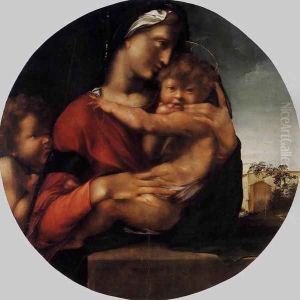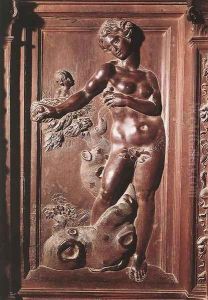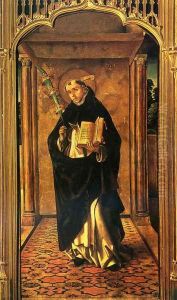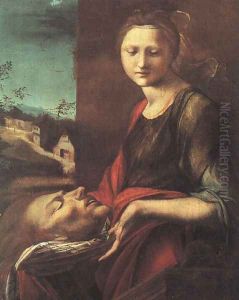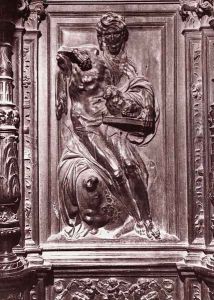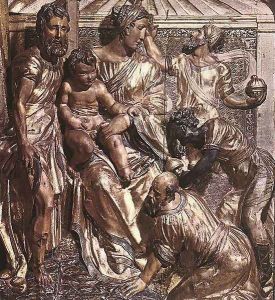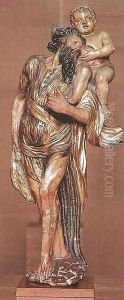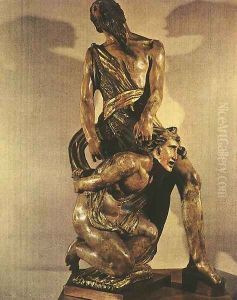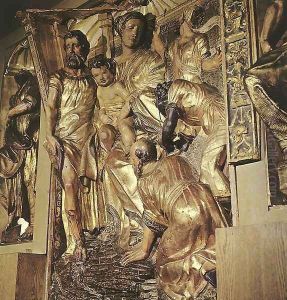Alonso Berruguette Paintings
Alonso González de Berruguette, commonly known as Alonso Berruguette, was a prominent Spanish sculptor, painter, and architect, celebrated for his expressive and dramatic Renaissance style. Born around 1488 in Paredes de Nava, Palencia, Spain, he was the son of Pedro Berruguette, a distinguished painter of the Spanish Renaissance, from whom Alonso inherited a profound artistic legacy. Alonso's early years were marked by a profound artistic education, likely first under the guidance of his father and then through his travels in Italy, where he was deeply influenced by the burgeoning Renaissance movement.
Berruguette's Italian sojourn, especially in Florence and Rome, was pivotal. He absorbed the innovations of the Italian Renaissance, studying the works of masters such as Michelangelo and Raphael. This exposure had a profound impact on his artistic development, integrating Italian Renaissance techniques with his Spanish roots to create a unique style characterized by dynamic compositions, intense expressions, and a robust use of color and form.
Returning to Spain in the early 16th century, Berruguette began to receive significant commissions, which helped establish his reputation as one of the leading artists of the Spanish Renaissance. He worked extensively for the Spanish court and the Catholic Church, creating sculptures, altarpieces, and paintings that were renowned for their expressiveness and emotional intensity. Among his notable works are the choir stalls of the Toledo Cathedral and the tomb of Cardinal Tavera in the Hospital de Tavera, Toledo.
Berruguette's contributions were not limited to sculpture and painting; he also had a significant impact on architecture and decorative arts, bringing Renaissance ideals to Spanish soil. His works are characterized by a dramatic interplay of light and shadow, a hallmark of the Spanish Renaissance that prefigured the later Baroque style.
Despite his influence and prolific output, Alonso Berruguette's work was somewhat overshadowed by the giants of the Italian Renaissance. However, in recent years, scholarly attention has increasingly recognized his role in bridging Italian and Spanish art, highlighting his significance in the development of the Renaissance style outside Italy.
Alonso Berruguette passed away in 1561, leaving behind a legacy of artistic innovation that significantly contributed to the cultural heritage of the Spanish Renaissance. His works continue to be celebrated for their vibrancy, emotional depth, and technical mastery, securing his place among the eminent artists of the 16th century.
